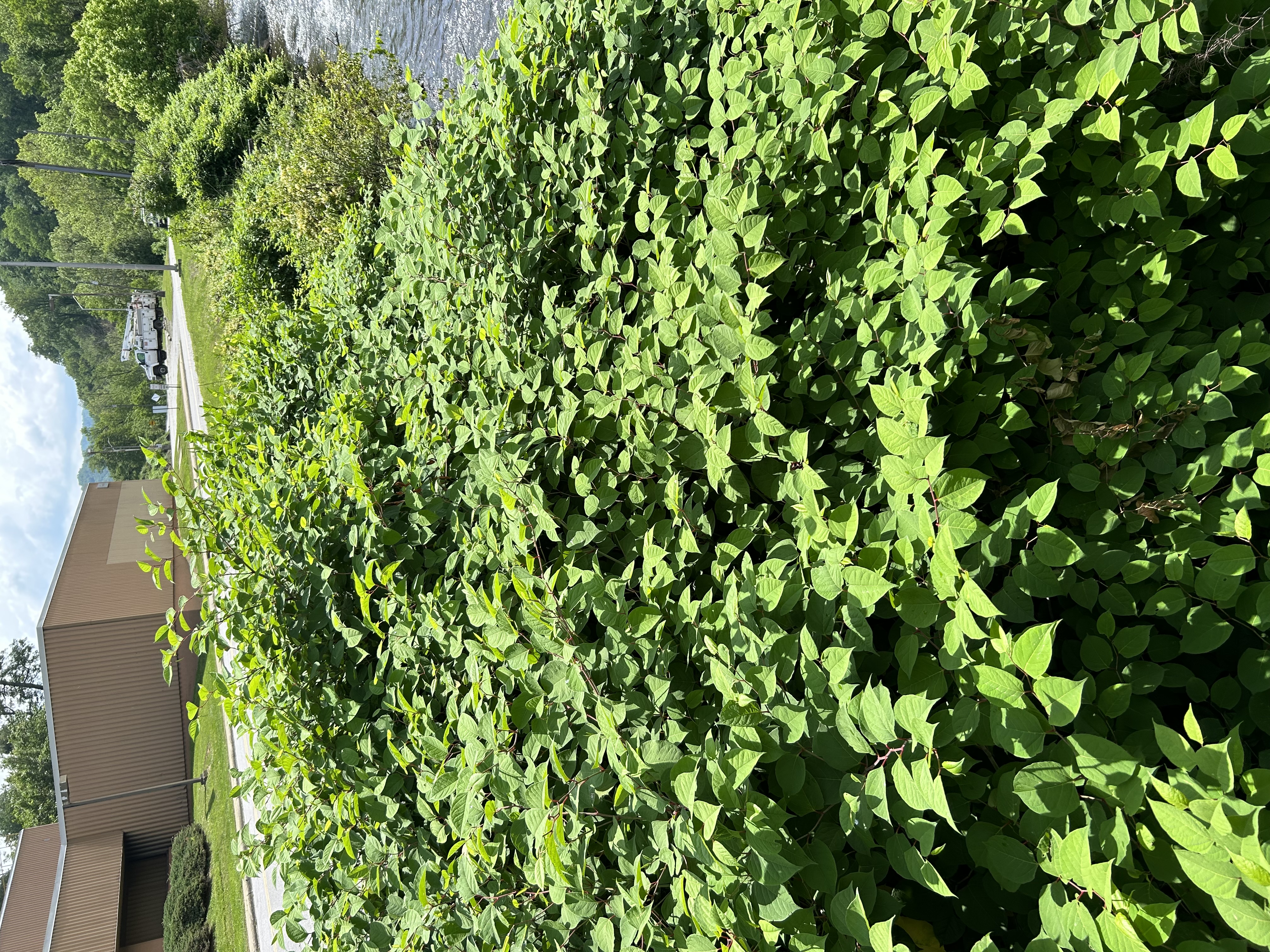Knotweed: An Invasive on Steroids
go.ncsu.edu/readext?944118
en Español / em Português
El inglés es el idioma de control de esta página. En la medida en que haya algún conflicto entre la traducción al inglés y la traducción, el inglés prevalece.
Al hacer clic en el enlace de traducción se activa un servicio de traducción gratuito para convertir la página al español. Al igual que con cualquier traducción por Internet, la conversión no es sensible al contexto y puede que no traduzca el texto en su significado original. NC State Extension no garantiza la exactitud del texto traducido. Por favor, tenga en cuenta que algunas aplicaciones y/o servicios pueden no funcionar como se espera cuando se traducen.
Português
Inglês é o idioma de controle desta página. Na medida que haja algum conflito entre o texto original em Inglês e a tradução, o Inglês prevalece.
Ao clicar no link de tradução, um serviço gratuito de tradução será ativado para converter a página para o Português. Como em qualquer tradução pela internet, a conversão não é sensivel ao contexto e pode não ocorrer a tradução para o significado orginal. O serviço de Extensão da Carolina do Norte (NC State Extension) não garante a exatidão do texto traduzido. Por favor, observe que algumas funções ou serviços podem não funcionar como esperado após a tradução.
English
English is the controlling language of this page. To the extent there is any conflict between the English text and the translation, English controls.
Clicking on the translation link activates a free translation service to convert the page to Spanish. As with any Internet translation, the conversion is not context-sensitive and may not translate the text to its original meaning. NC State Extension does not guarantee the accuracy of the translated text. Please note that some applications and/or services may not function as expected when translated.
Collapse ▲This promises to be an interesting year for plants in the area – the mild winter and steady spring rain have already led to local floral showing some early blooms and truly hulkish sizes. Barring a late freeze it should be an exceptionally lush early summer as well.
While many of our native plants are willing and able to take advantage of particularly favorable growing seasons, the same unfortunately rings true for invasive plants.
While there are a wide number of strangling vines, tenacious ground-crawlers and seedy grasses that readily take over and displace natural ecosystems, there is an especially dangerous foe among them that deserves a callout today.
Tinged with hints of hellish reds and possessing demonic roots capable of bursting through concrete sidewalk and foundation alike, this monster can regenerate from even the smallest iota of plant matter
Like the liquid bad guy from Terminator 2 mixed with the plant from Little Shop of Horrors, the offender constantly seeks to reform following even extreme removal efforts.
Originally hailing from Japan, Korea, China and Taiwan, Asian knotweed was most likely first introduced into the area in the last 200 years or so by landscapers attracted by its rapid growth and cascading floral displays. It’s now considered one of the most invasive plants on Earth, finding its way onto every continent except for Antarctica.
This is particularly bad for native waterways, which can quickly become overrun by knotweed.
Once established, knotweed’s rapid growth mixed with inhibiting chemicals exuded by its tough roots makes the soil inhabitable or inaccessible for native plants and animals. Knotweed gives very few of the nutrients it leeches from the soil back, instead investing it into new spreading root systems.
Even the leaves it jettisons are especially drained of nutrients, leading to their being hard to eat by microbes and prone to piling up in streams and rivers causing bottlenecks and floods.
There are three main types of invasive knotweed in the area – Asian, giant, and a hybrid between the two called Bohemian knotweed. Unfortunately the hybrid is not as laid back as its name may suggest.
All of these plants warrant immediate and aggressive removal, as their colonies will only get worse with time, and the longer they stay in place the longer it will take for your soils to fully recover. Since this axis of evil is such a problem worldwide, sustainable removal of invasive knotweed is an area of feverish research at the moment.
The methods I prefer are mechanical – as the long term effects of herbicides on soil microbes and aquatic ecosystems are still largely unknown, I’d rather not risk causing undue harm if possible. Removing knotweed is achievable by hand, there are just some things to be aware of before you start.
First off, all three of the invasive knotweed species here are edible and highly nutritious, with a taste similar to rhubarb if used in pies or other similar dishes. Adding knotweed to your weekly meals will be a great first start in slowing down their spread.
Since knotweed can regenerate from even tiny pieces, be very careful with how you dispose of anything you don’t eat. Don’t transport plant material between sites.
Knotweed has been found to sprout from up to 3 feet underground, so it needs to be buried to a depth of around 5 feet and/or dried for a few weeks in the sun. If drying, seal in a tarp to prevent any escapes. Several years of carefully removing roots and cutting aboveground growths is usually enough to exhaust their energy.





